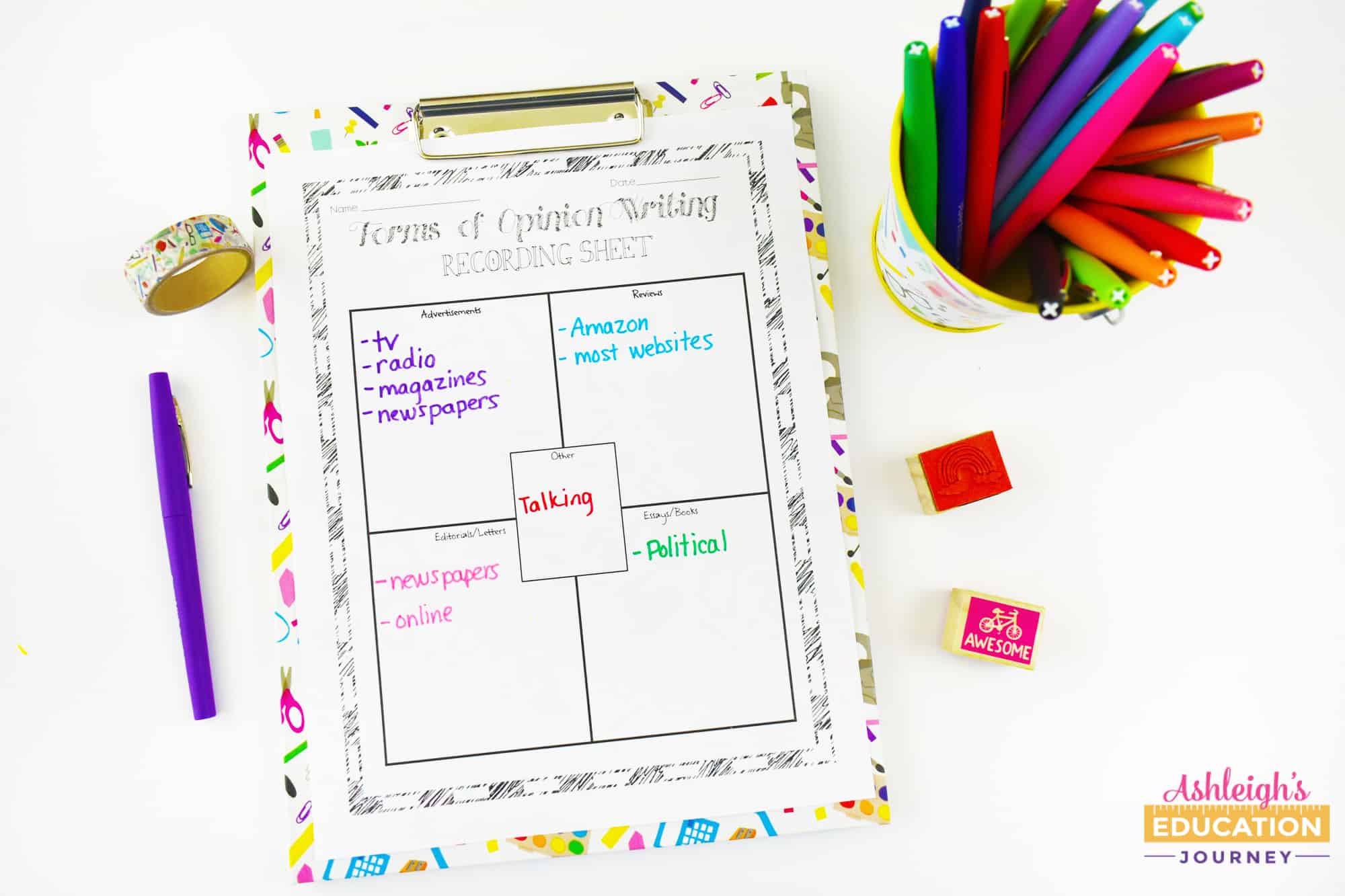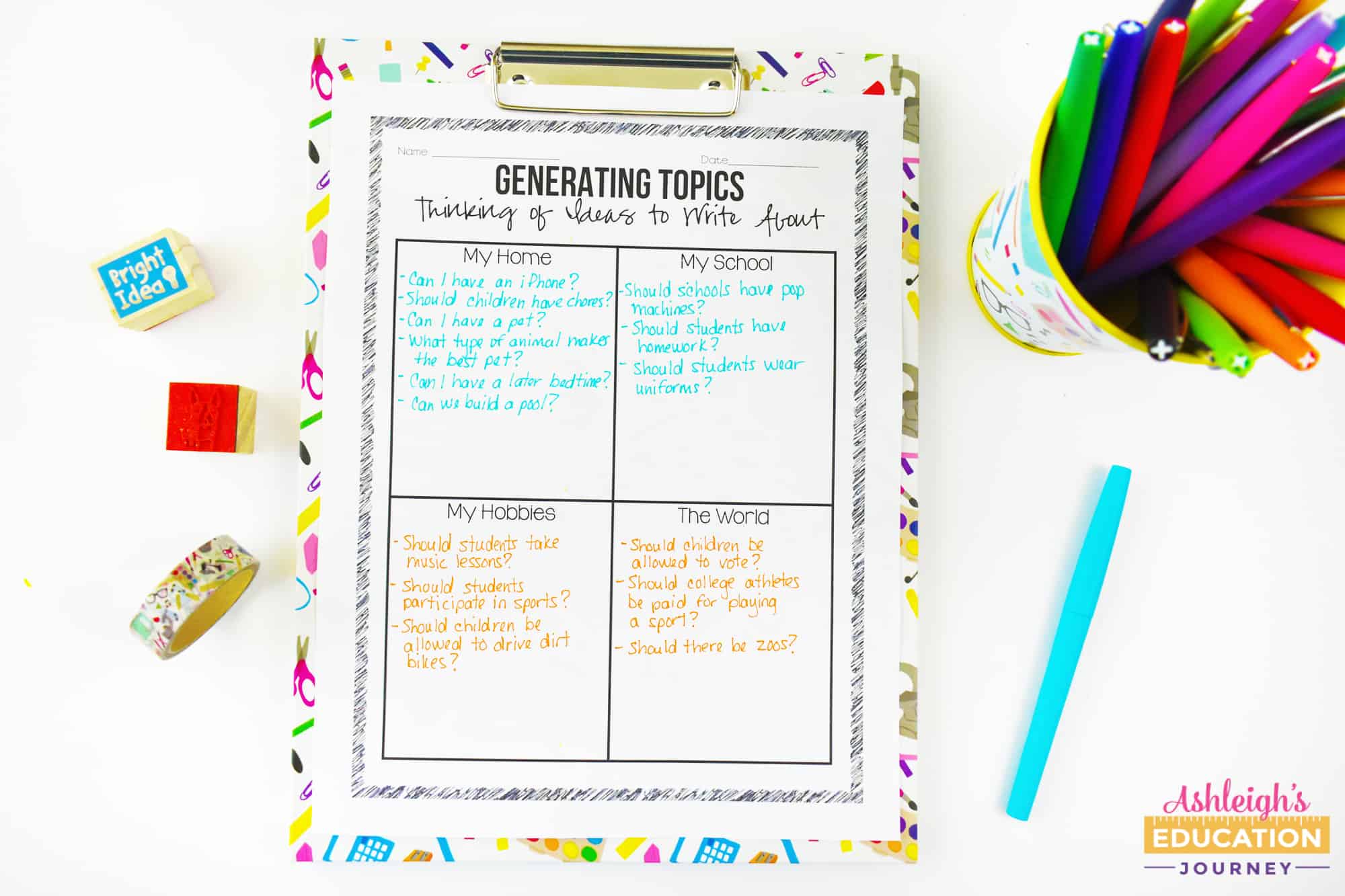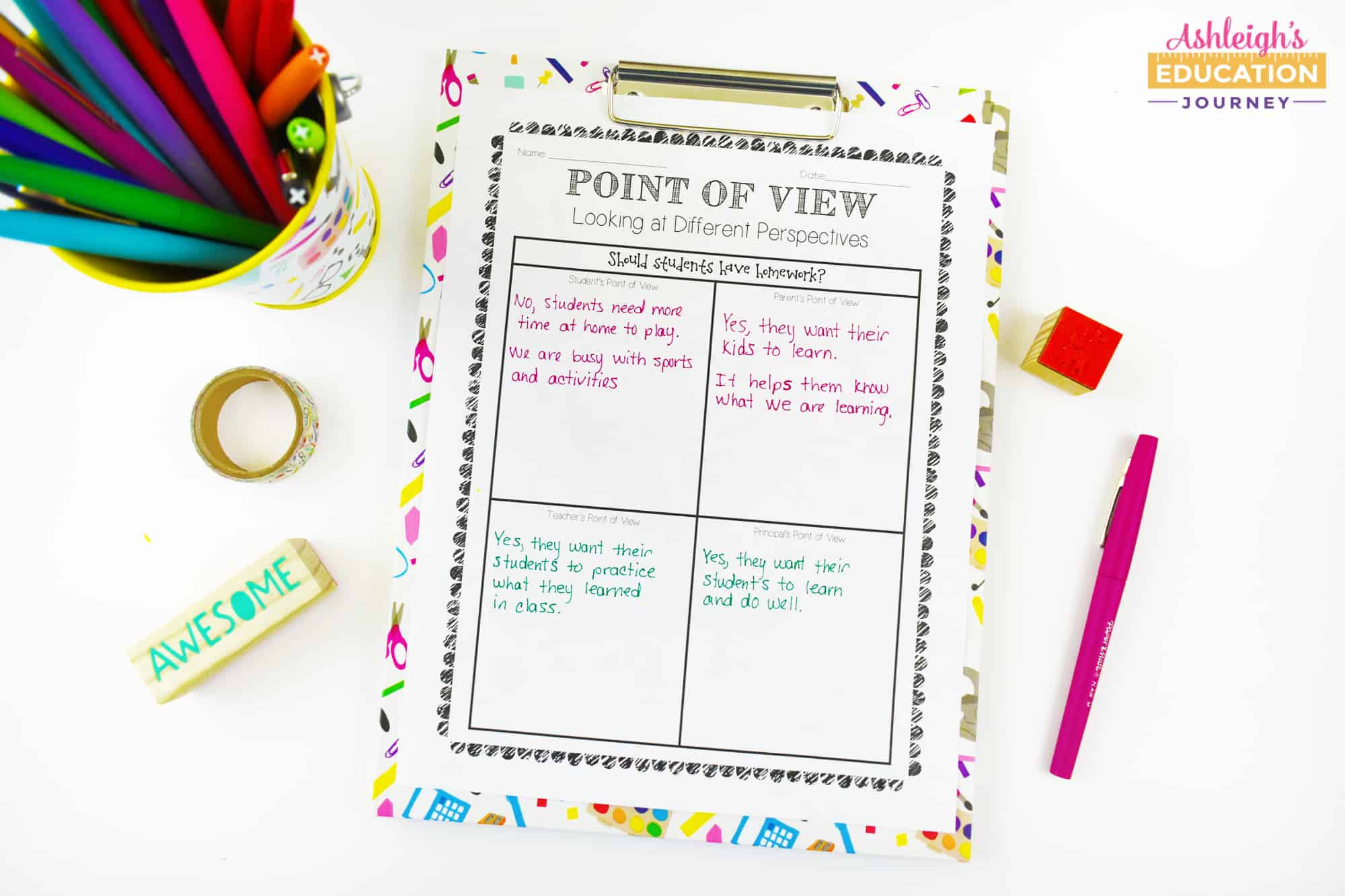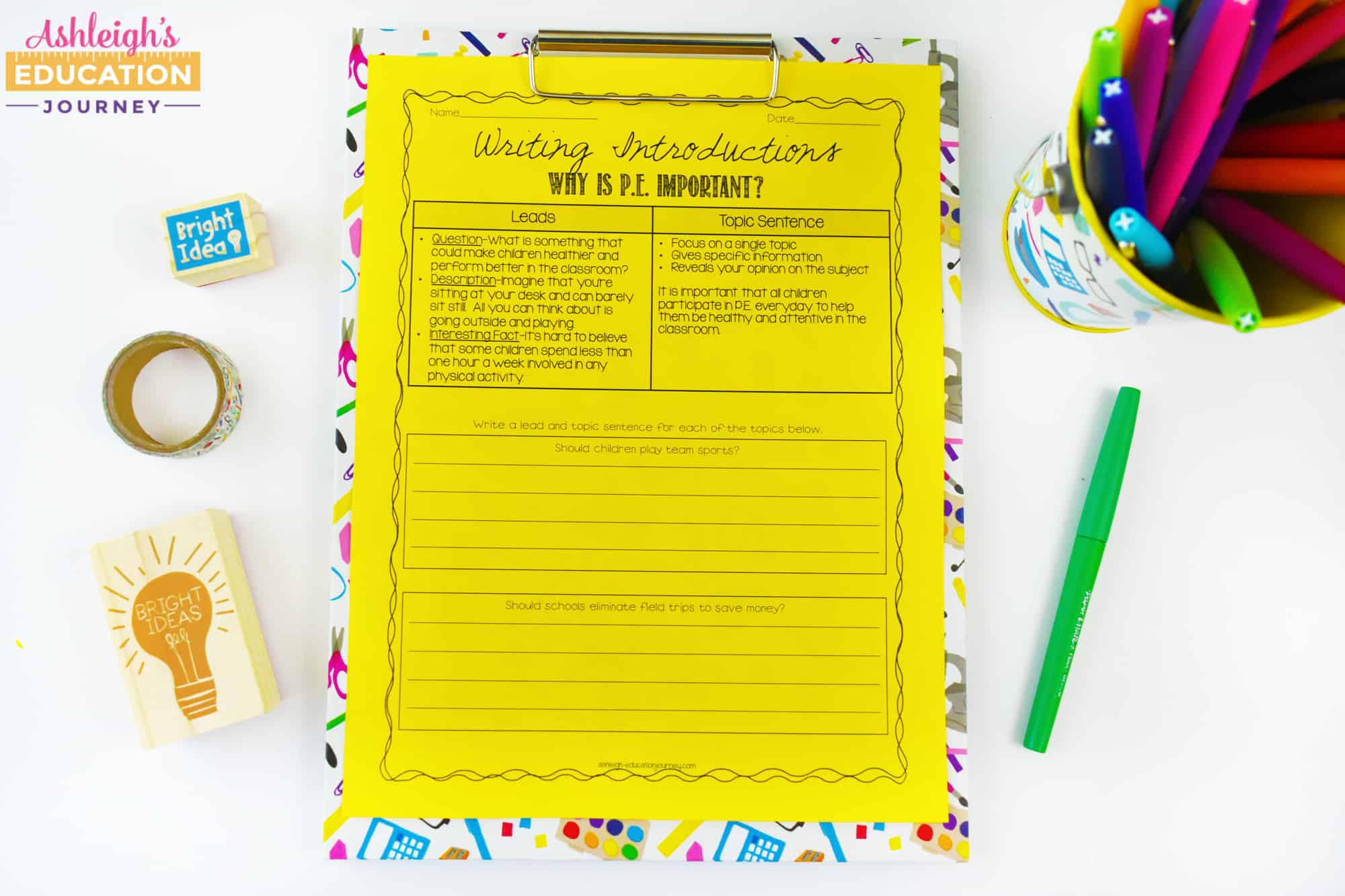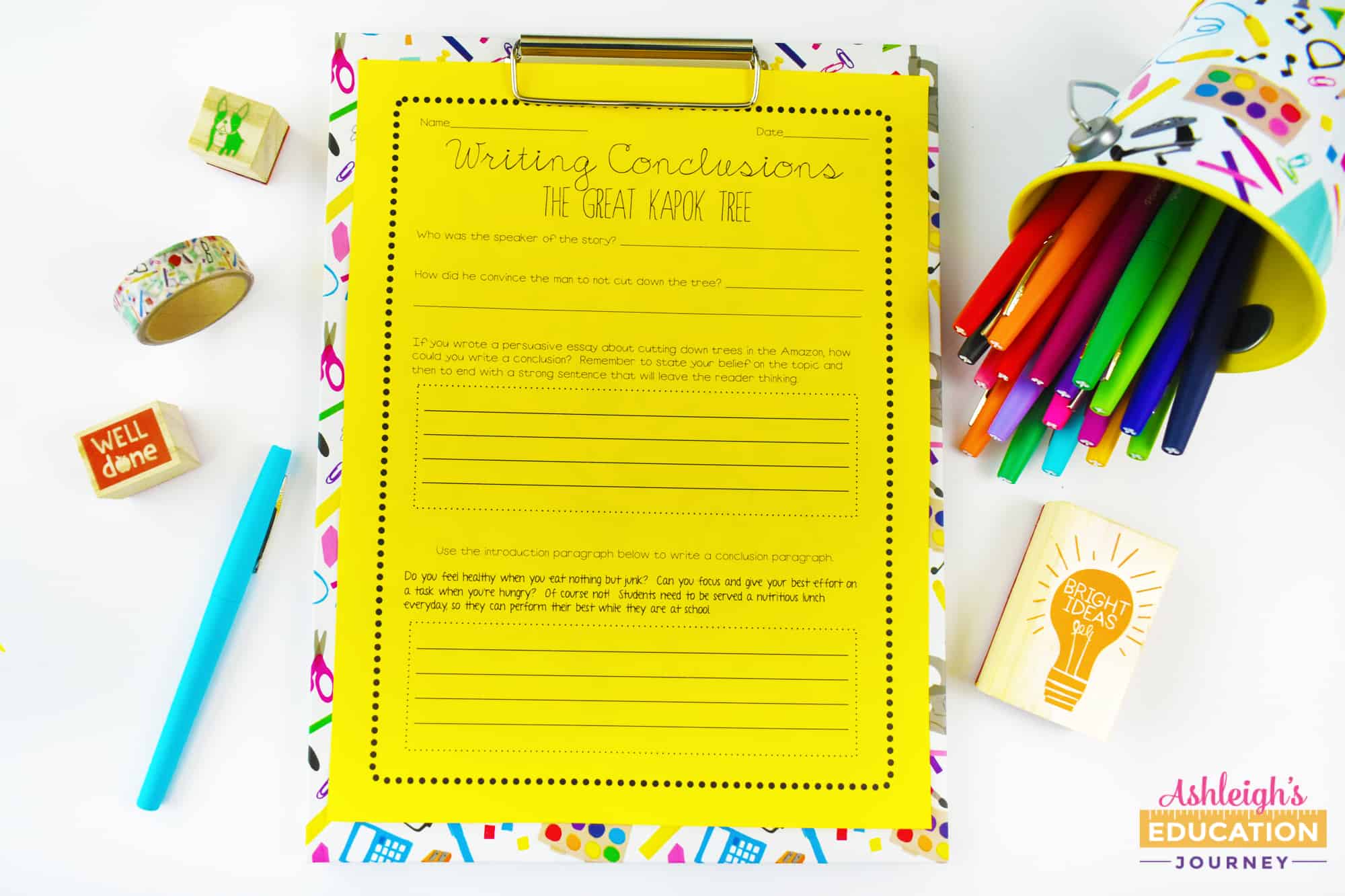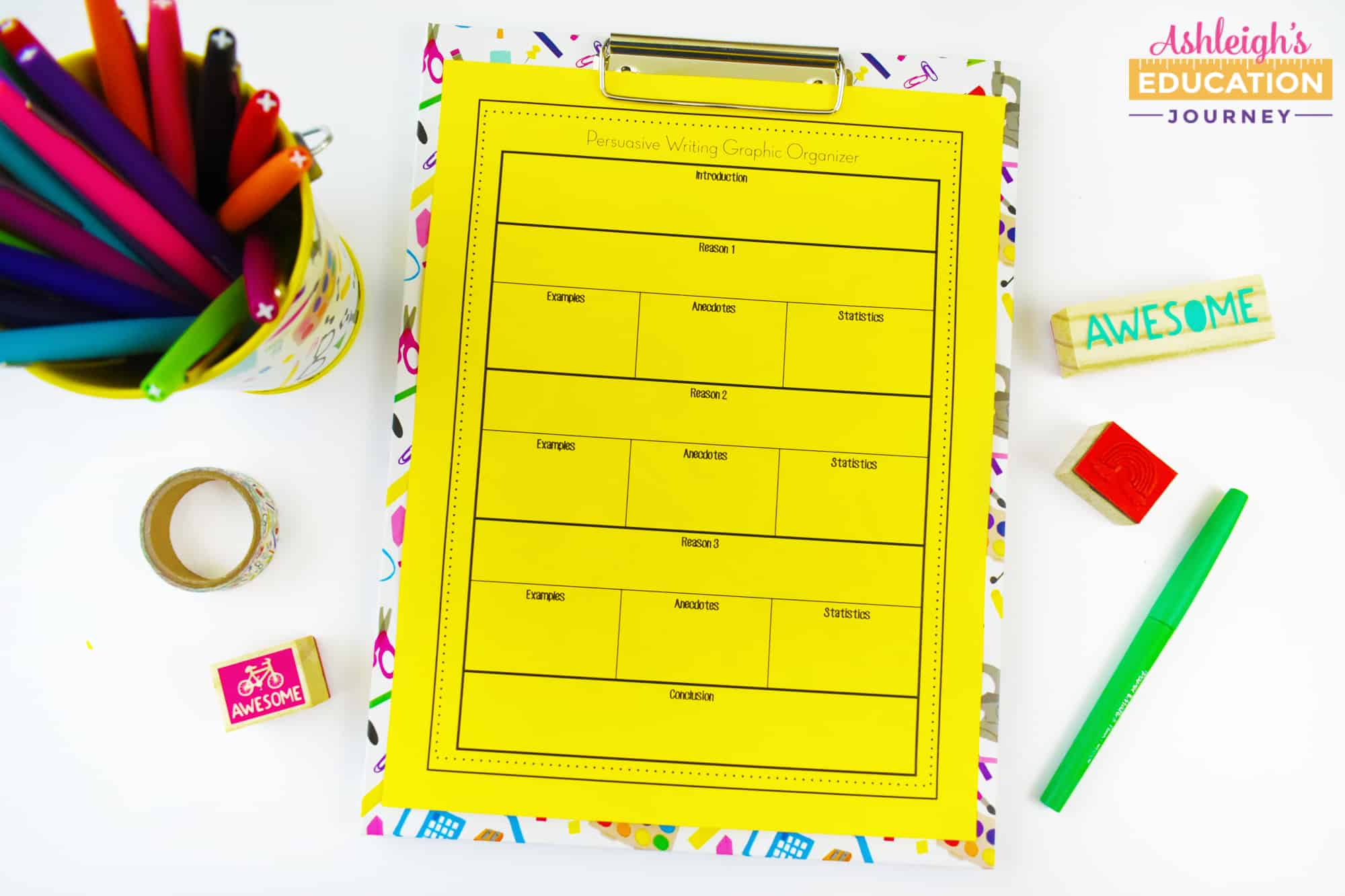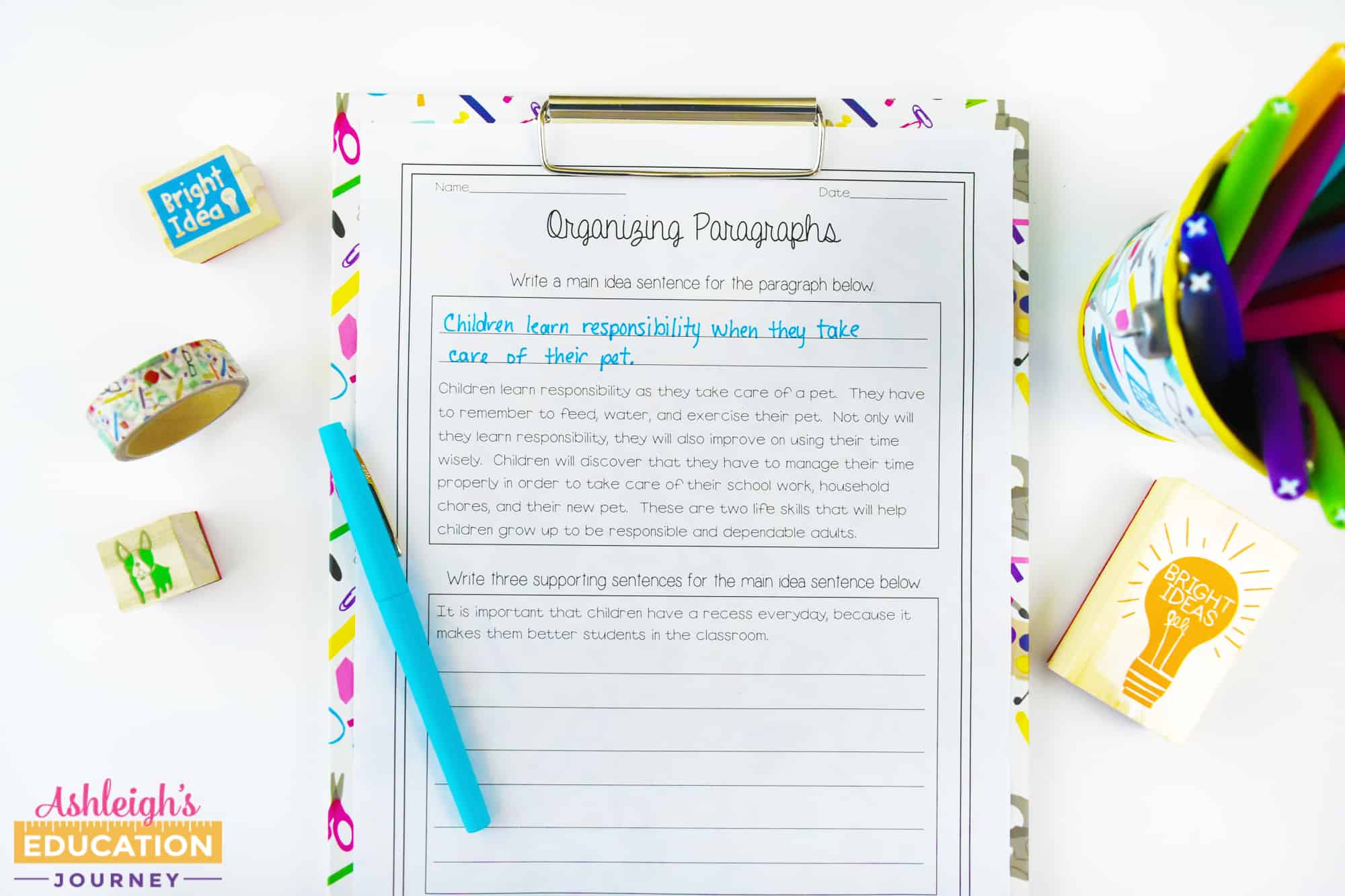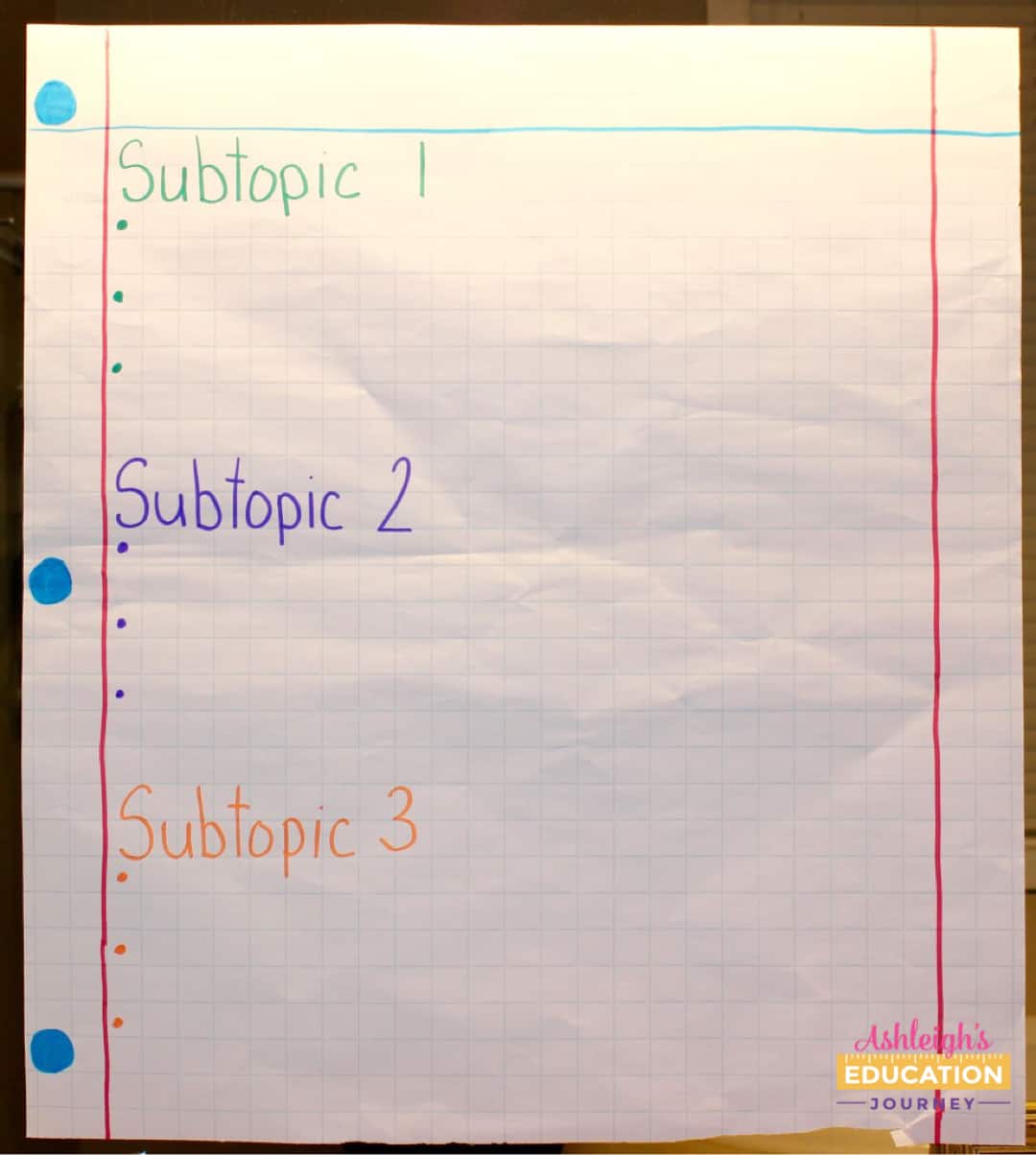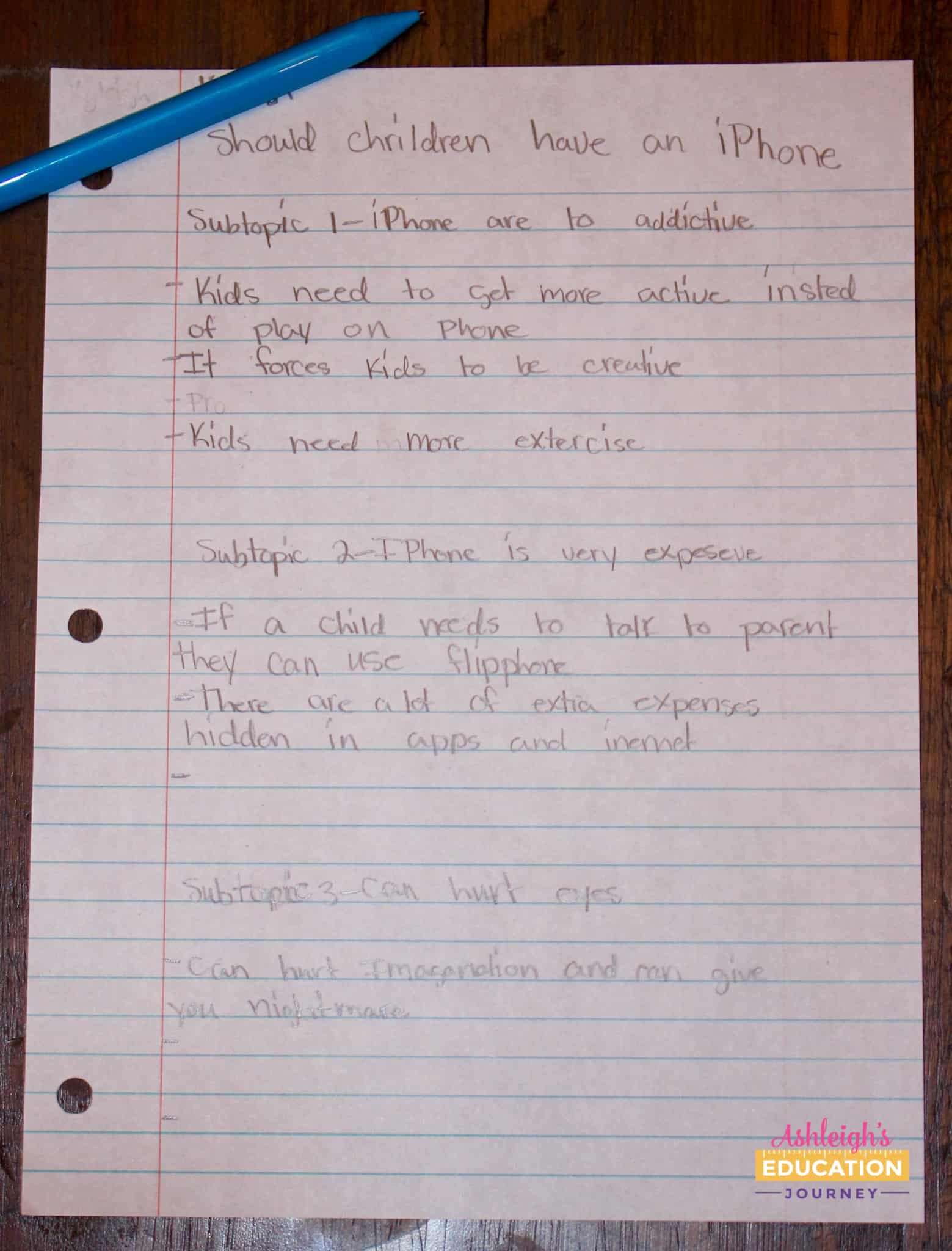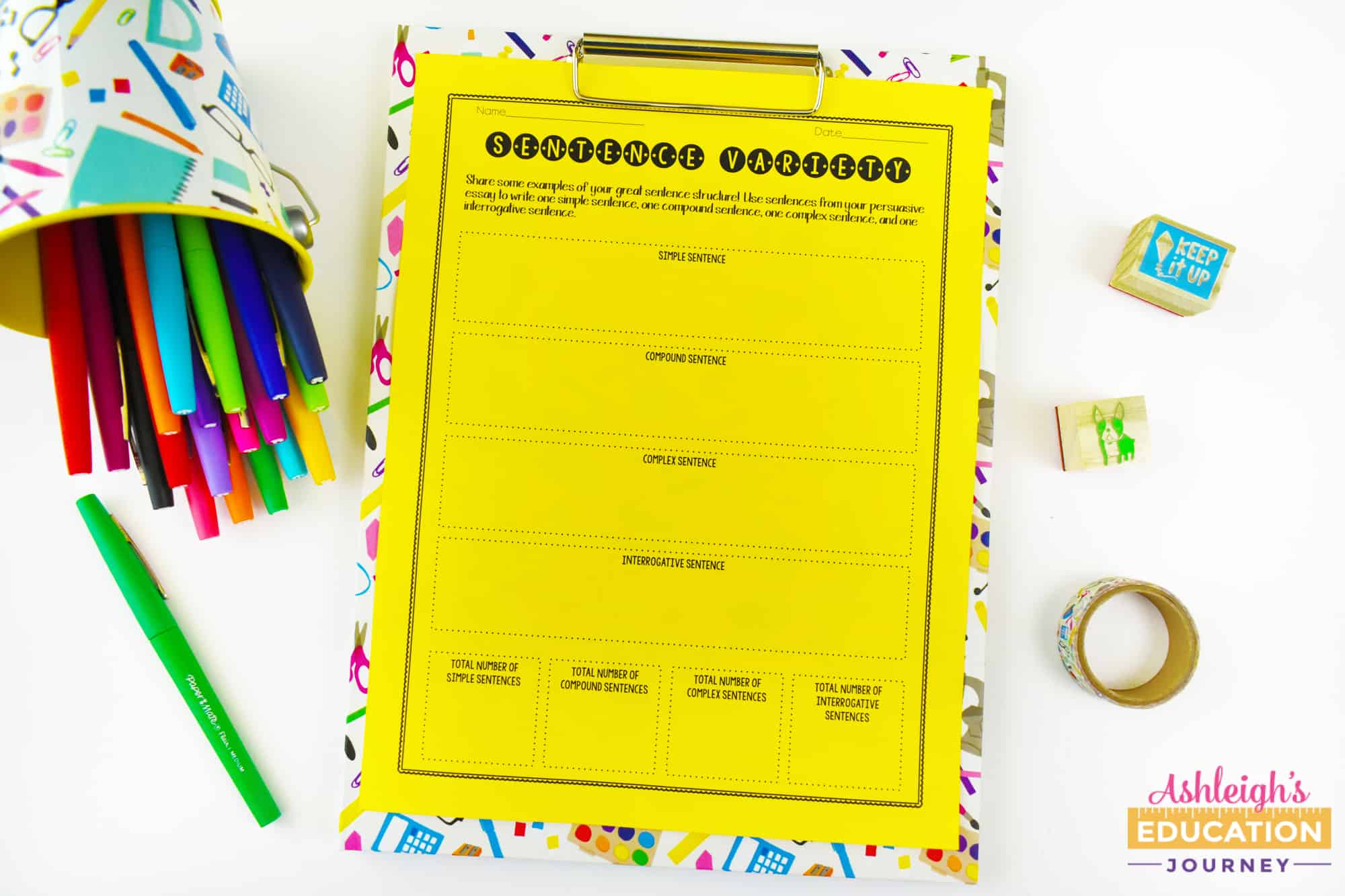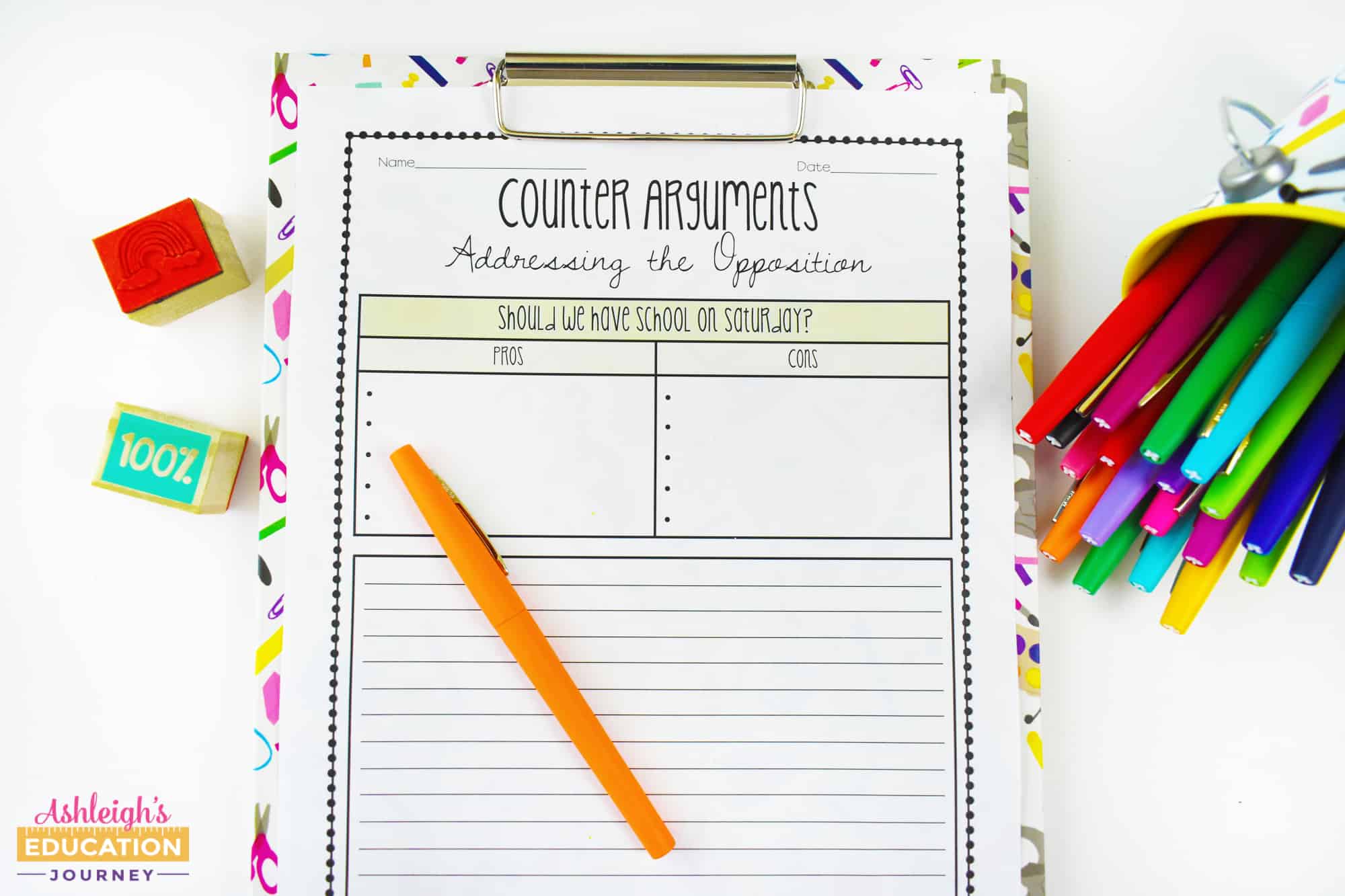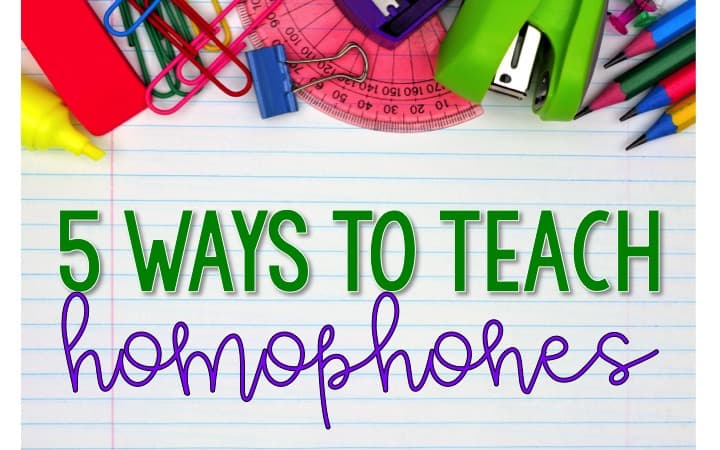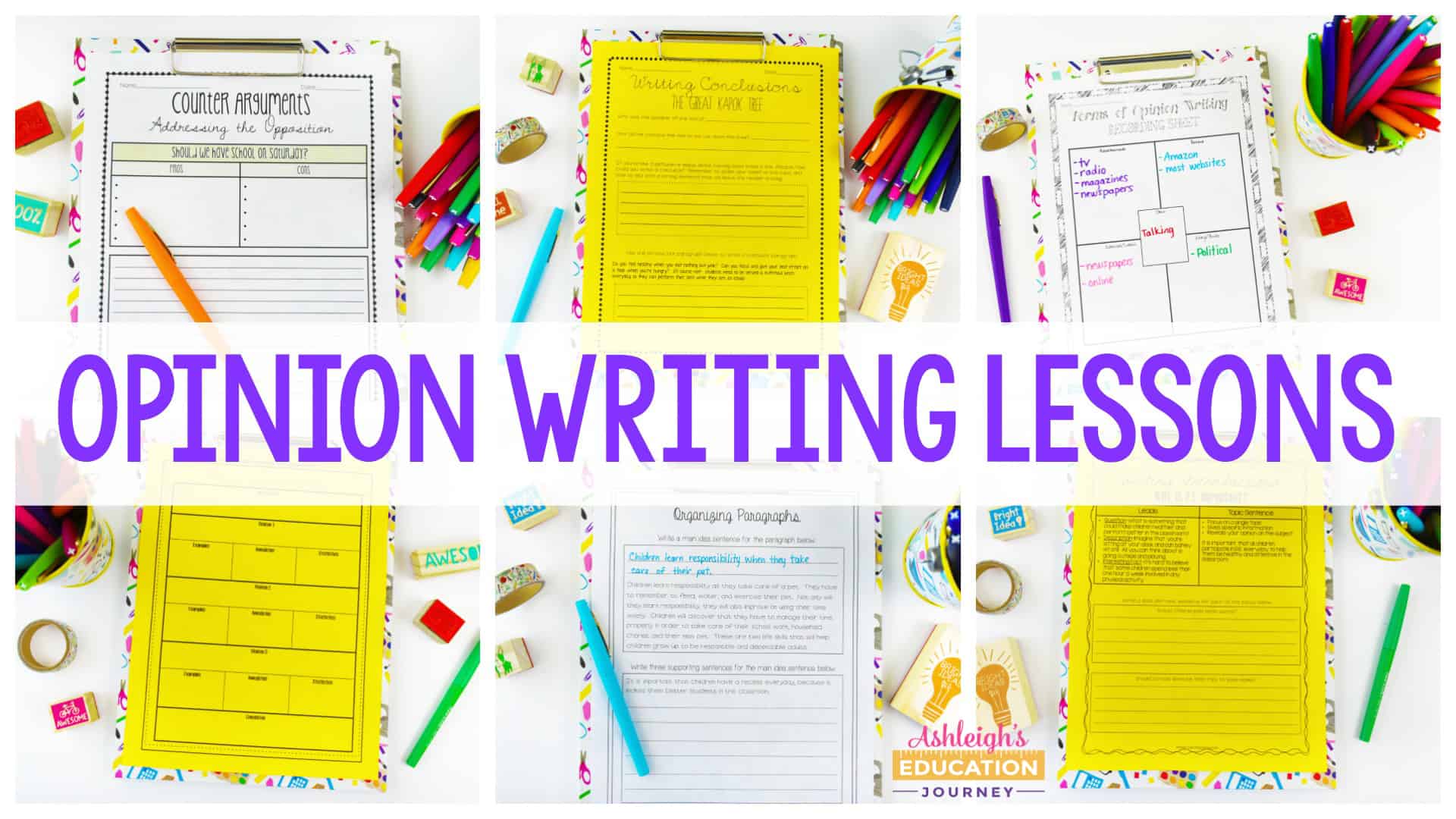
Opinion writing lessons can be fun for students and teachers. Opinion writing gives children something they can really get excited about, because they ALL have strong opinions! In this post I share some of my favorite opinion writing lessons and activities.
I typically begin teaching opinion writing lessons after my informational writing unit, which you can read more about here. These two writing genres tie together seamlessly, so it’s a natural transition for students. It’s beneficial to teach both genres as soon as you can to be able to integrate opinion writing in other subject areas.
Be sure to begin your opinion writing unit slowly. The end result suffers when we hurry through the initial opinion writing lessons.
Forms of Opinion Writing
Even though it takes me a bit off track with actual writing process, I start the unit with a couple opinion writing lessons that teach students what opinion writing is and is not. Once students understand the concept of opinion writing, they go on a scavenger hunt to find examples of opinion writing. This places students in front of a large variety of opinion text.
It’s hard to teach an opinion writing unit, without at least mentioning ads and reviews, because that’s a large portion of the opinion writing that students have encountered at this point in their lives. When we brainstormed different types of opinion writing, my students were amazed to see how many ads they encountered in their day-to-day life.
During these opinion writing lessons, we also spend a little time looking a book reviews. Students read book reviews about their favorite books on Amazon and discussed what makes a good review. They were especially passionate about the reviews they did not agree with. After analyzing book reviews, students were able to write a book review on a book of their choice.
Generating Topics for Opinion Writing
After writing book reviews, students were ready to dig deeper into opinion writing lessons. I started by having students brainstorm opinion writing topics to write about. I’ve found that giving students time to brainstorm and share their ideas with the class helps them select good topics to write about later in the unit. When they share their ideas with the class, some students help by saying, “that might be difficult to write about” or “will you be able to prove that”.
Opinion Writing Lessons-Point of View
I then teach students how to think about topics from different points of view. Luckily, I just so happened to be teaching point of view during reading, so that was perfect timing! I want students to think about point of view in opinion writing, because eventually, I want them to be able to write counter arguments. As students work, I make it a point to avoid inserting my own point of view. For the most part, elementary students are pleasers, and they have a tendency to adopt whatever point of view they believe will make their teacher happy. I encourage my students to think for themselves.
In the planning stages of our opinion unit, I also have students think about the audience they are writing to and why their audience should agree with them. Students also learn to make a pro and con list to support and disagree with their topic.
In my opinion writing lessons, I also spend a considerable amount of time teaching students how to write good leads and topic sentences, as well as how to write a conclusion paragraph. Students learn to use either a question, description, or interesting fact for the lead of their opinion essay. They follow the lead with a topic sentences that focuses on the topic and shares their opinion on the topic. When writing a conclusion paragraph, students learn to restate their introduction using different words.
Opinion Writing Lessons – Graphic Organizer
When students learn to organize their opinion writing, I love using a clear and easy to follow opinion writing graphic organizer that allows students to organize their thoughts. I have students first identify their three reasons. Then, I have students determine what examples, anecdotes, or statistics they will use to support each of their reasons.
Organization for opinion writing essays is always a challenge for students, so I often give students additional practice with organizing information. In the lesson below, students are given supporting details and must write a main idea sentences for the supporting details. In the following section, students are given a main idea sentence and must write three supporting details for that sentence.
During my opinion writing lessons, I scaffold away printed organizers for my students. I know that writing is so much easier for students when the graphic organizer is printed/copied for my students, and I use them when I teach paragraph writing and informational writing. However, I know that I will not be able to provide graphic organizers for my students’ writing test, so I try to teach students how to create their own graphic organizer. {Not to mention that this time of year paper and copies start running low, and who knows if the copy machine or printer will be working.}
Transitioning Graphic Organizers
I’ve learned that the transition from premade graphic organizers to creating a graphic organizer on notebook paper is an extremely difficult transition for students. This year, I spent a lot of extra time teaching students how to use notebook paper for an effective graphic organizer. I’ve also learned that I need to keep the graphic organizers simple. Otherwise, students won’t even try to make their own. I spent a significant amount of time using my digital projector and modeling how to write a graphic organizer template on a sheet of notebook paper. Since my students were already familiar with the terms subtopic and supporting details, I remained consistent and used the same terms in informational writing.
I had my students write three subtopics and three bullet points underneath each subtopic. This format is simple, yet it’s a great way to help students avoid overlapping subtopics and subtopics that don’t lend themselves to supporting details. You can see how I turned it into an opinion writing anchor chart in the photo above.
Once students were able to create their own graphic organizer, I started one of my favorite opinion writing lessons. I asked the class if they thought children should have iphones. I was fairly surprised to see that my class was split in half on their opinions. I grouped students into groups of four, where all students in the group had the same opinion. Then, they worked together to create a graphic organizer with subtopics and supporting details showing whether or not it was good for children to have an iphone. I was blown away at how well they worked together and the depth of their thought process. I could see their previous knowledge from our informational writing unit emerge as they discussed overlapping subtopics and good supporting details. Both sides of the argument were able to think of excellent reasons for and against the phones. Students were very passionate about this topic, and it was fun watching their eyes light up as they worked with their group.
As we move into the process of transferring the graphic organizer to paper, I will allow students to use the graphic organizer they created in their group for their first complete piece of opinion writing. We will slowly walk through that piece together by a lot of support from me. Having everyone write about the same topic will make the first run much easier than it would be if everyone were writing about a different topic. Once we complete the first opinion essay, I’ll have students independently write and will encourage them to select a topic from their brainstorm list.
Author’s Craft
As students begin their second opinion writing piece, I’ll move from organization and structure to the craft of writing, as well as revision and editing. You can see a few examples of our writing craft lessons below. As students write, they should try to use a variety of sentence styles. For guided practice, I have students write the same content in a simple sentence, compound sentence, and complex sentence. Another fun activity for sentence variety is to have students read through a piece of opinion writing and count the number of examples for each type of sentence. I love lessons that incorporate writing craft and grammar!
As students advance through these opinion writing lessons, I address how to use counter arguments. This is a bit more complex, but it’s an extremely effective strategy in opinion writing.
You can find all of the lessons and printables above, as well as opinion writing mentor texts in my Opinion Writing Unit on TpT. Even if you don’t use the unit, hopefully these ideas will help you get started with your own opinion writing unit! This is also offered in my Writing Bundle that includes fictional narrative writing, personal narrative writing, informational writing, and opinion writing for a 20% discount! If you want to read more about teaching writing, be sure to check out this post!

